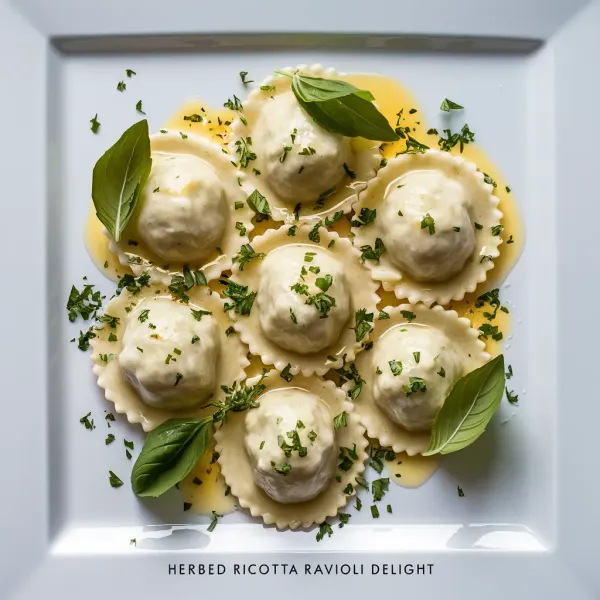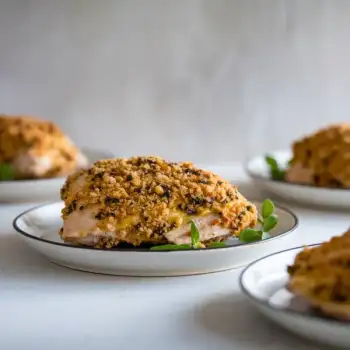
 36 minutes
36 minutesA delightful ravioli dish filled with herbed ricotta cheese and served with butter and Parmesan.


cups
Garlic Clove, finely chopped
each
Extra Virgin Olive Oil, or softened butter
tablespoons
each
cups
Mixed Chopped Herbs
tablespoons
to taste
to taste
Fresh Pasta
0 recipe
Unsalted Butter, for serving
tablespoons
Additional Parmesan Cheese, for serving
to taste
1. Make the Filling
In a bowl, combine the ricotta cheese, finely chopped garlic, extra-virgin olive oil or softened butter, egg, freshly grated Parmesan cheese, and the mixed chopped herbs. Season with a pinch of salt and some fresh-ground black pepper. Mix everything together until you have a uniform mixture, making sure the herbs and garlic are evenly distributed throughout the ricotta.
2. Prepare the Pasta Sheets
Take your Fresh Pasta dough and roll it out into thin sheets, approximately 14 inches long. This ensures the pasta cooks evenly and holds the filling well. Use a rolling pin to achieve thin, even sheets; the pasta should be almost translucent.
3. Add the Filling
Using a spoon or a piping bag, place about one tablespoon of the ricotta mixture along the lower third of the pasta sheet, spacing the mounds about 1.5 inches apart. Fold the upper half of the pasta sheet over the lower half to cover the filling. Press around each mound to remove any air pockets, which helps to prevent the ravioli from bursting while cooking.
4. Cut the Ravioli
Cut the ravioli using a zigzag rolling cutter, first cutting along the bottom edge and then between the mounds to create individual ravioli. Place the cut ravioli on a sheet pan lined with a towel or parchment paper, and cover them to prevent drying. Refrigerate the ravioli to firm them up, which helps to keep the filling from seeping through the pasta.
5. Cook the Ravioli
Bring a pot of salted water to a simmer. Carefully drop the ravioli into the water and cook for 5 to 6 minutes. You'll know they're done when they float to the top. Drain the ravioli well.
6. Serve
In a small saucepan, melt the butter over low heat. Pour the melted butter over the drained ravioli and sprinkle with additional freshly grated Parmesan cheese.
Opt for fresh, whole-milk ricotta with a creamy texture and rich flavor to ensure the best foundation for your filling.
Drain your ricotta in a cheesecloth-lined sieve in the fridge to remove excess whey, which prevents soggy ravioli.
Roll pasta dough thin enough to slightly see your hand through it, ensuring delicate ravioli that cooks evenly.
Knead until smooth and elastic, and let it rest to ensure it rolls out nicely and doesn't tear during assembly.
Press out all the air and seal the edges firmly with water or egg wash to prevent filling from leaking during cooking.




Comments (0)